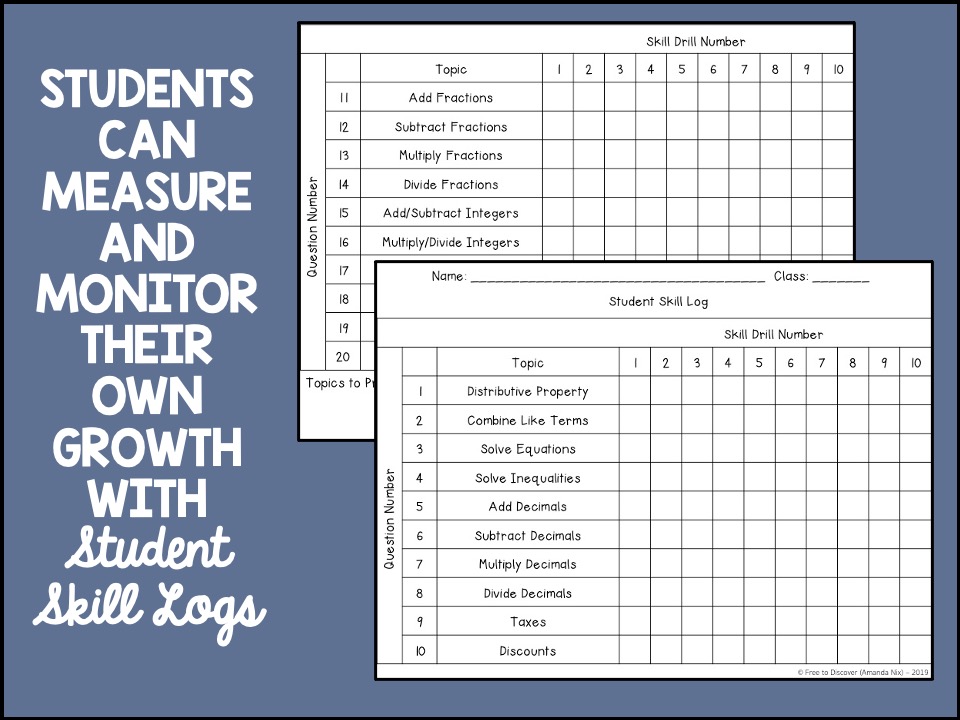
5 Pillars of Math Intervention That Works
If you are a secondary math educator that's teaching students who are all on or above grade level without a need for intervention or remediation, then you can go ahead and skip this post...
---
Oh, look. You're all still here!
All joking aside, middle school and high school teachers need a math intervention program that works.
Stay with me if you're looking to:
- Increase math fluency with real numbers, proportional reasoning, algebraic thinking, and more;
- Improve retention of math skills learned last week, last month, last year, and beyond;
- Motivate students to complete their work by utilizing routines;
- Promote student independence during math intervention blocks; and
- Facilitate student ownership of learning using data analysis.
Let's explore the 5 pillars of math intervention that works!
Pillar 1: MATH FLUENCY
First, let's understand the goal. According to Bloom, "Creativity follows mastery, so mastery of skills is the first priority for young talent." Calculators, multiplication charts, and reference sheets are useful tools, but should not take the place of mastery practice. Students should engage in lots of skills-based practice to build math fluency so that they can apply their knowledge to more challenging, higher-order thinking questions. Therefore, math intervention may be necessary in order to build math fluency with real numbers, proportional reasoning, algebraic thinking, etc.
Pillar 2: RETENTION
Next, math intervention must be structured such that it builds retention. The practice may be moot if not assigned consistently and orderly. The objective is to improve retention of math skills learned last week, last month, last year, and beyond. Narrow the focus to 10-20 math skills that students should drill. Construct a worksheet that contains one problem associated with each skill. Each week assign a similar worksheet with the same skills but different numbers. You may decide to increase the difficulty throughout the assignments. Consistency is key to building retention. Also, it is very important that students are given timely feedback and opportunities to correct their work. Practicing incorrectly will take disproportionately more time to unlearn, thus the most efficient practice allows for revision.
Pillar 3: MOTIVATION
Motivation - like retention - also evolves from routines. By consistently engaging students in math intervention, they will come to expect the assignment, and when trained correctly, will automatically meet expectations. In order to train students to engage appropriately in math intervention, be sure to give very clear directions right from day one. In addition to routines, motivation can stem from differentiation. Differentiate skills practice with students by adjusting the numbers of problems they practice on one assignment, allowing students to earn a pass when demonstrating consistent mastery, or by adjusting the scaffolding you provide.
Pillar 4: INDEPENDENCE
Can you imagine if your students actually looked back at and utilized their notes? You can totally make that happen! Provide students with a separate folder for math intervention. For week 1 of intervention, you will likely need to provide a tremendous amount of support. Use some time to reteach and work through problems together. Be sure that students record everything - all their work with correct answers included - and keep the assignment in their math intervention folder. Then the magic happens. Week 2 rolls around and students have a completed and corrected week one assignment to look back on. Whenever students have questions, first refer them back to their math intervention folder with previously completed assignments to look back on their work and model similar strategies for the new assignment. Voila!
Pillar 5: OWNERSHIP
Your students understand the routine and are developing math fluency. Ready for the icing on the cake? Students will take ownership of their learning by monitoring their own progress. Each time students receive their corrected assignments back, they keep a log of their results. Which topics do they need to work on? Are there certain topics that keep tripping them up? Organizing a spreadsheet with rows labeled as topics and columns by assignment number will give students a visual representation of their strengths and challenges.
Following these 5 pillars, you'll establish a math intervention routine that works. Oh, and if you would rather just purchase a created-for-you math intervention program, shop the Free to Discover Math Skill Drills for Grade 5 Math through Algebra 2. I'd love the opportunity to help you help your students master math content!
Join the Free to Discover community!
When you subscribe, you'll access our FREE monthly newsletter for secondary math students!



